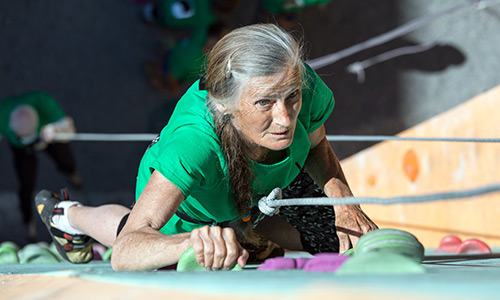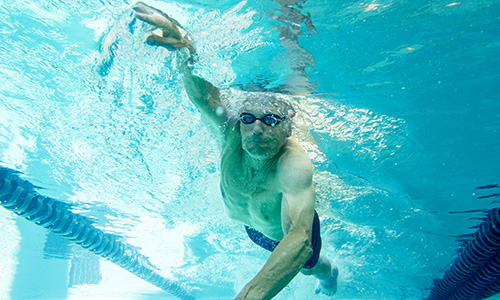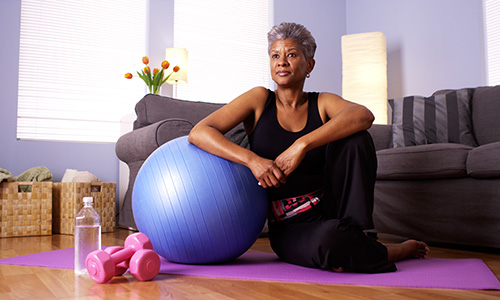Living well with arthritis
- Overview

Arthritis is a condition that affects the joints of the body. 520 million people around the world have arthritis and it can be a significant cause of pain and disability for an individual.
Many people who are diagnosed with arthritis assume the worst and think they will become progressively debilitated, but exercise can help to strengthen and support your joints, easing pain and reducing the impact of the condition on your life.
What exercises are good for arthritis?
It’s a myth that you have to stop any type of exercise if you have arthritis. While it's widely reported that high impact exercises like running lead to ‘bad knees’, there's no research to support this. Runners actually have been shown to have less arthritis in their knees when compared to non-runners. And the good news is that there are benefits for arthritis sufferers across all exercise types.
Cardiovascular exercise, which boosts your heart rate and lung capacity, is useful because it supports a healthy immune system, helping to reduce inflammation and pain in your joints.
Strength training using either bodyweight, fixed or free weights can help to strengthen the muscles around your joints, leaving them stronger.

Exercising in water can be useful, particularly if your condition is really painful, as the water takes the load off the joints, while providing gentle resistance to strengthen the muscles around them. Using a warm pool can also be soothing.
Cycling on an indoor bike can be good for hip and knee arthritis, mobilising the joints and boosting your cardiovascular system.
The most important thing is to choose exercise that you enjoy, so that you are more likely to keep it up. Keeping mobile is the best protection from stiffness, which leads to more pain.
It’s also important to ensure that you gradually build up the duration and intensity your exercise over a period of 6 – 12 weeks. Don’t go from doing nothing to doing everything. Instead, take a graded approach, which will allow your body to adapt and strengthen over time and reduce the risk of further injury.
Lifestyle changes
Pacing is a good approach to take in your everyday life too. It’s tempting when you have ‘good days’ to launch yourself into activity to get it done when you’re feeling good, but this boom of activity is likely to end in a bust, with you feeling too sore to do anything the next day. A good approach is to plan the tasks that you need to do a week in advance, and do one thing every day.

Take the same measured approach to your lifestyle in general, by ensuring you get plenty of sleep, are eating well and exercising a little every day. Improving a few things by 1% can make a huge difference to your life and using wearable technology to track your progress can serve as an additional motivation, giving you evidence that you’re making a difference to your health.
If you have very specific pain concentrated in one area, you might want to talk to a physiotherapist who will be able to recommend some targeted exercises to help and if you are struggling with pain, speak to a GP who will be able to advise on the best pain relief plan.
Last updated Friday 26 August 2022
First published on Monday 8 August 2016

